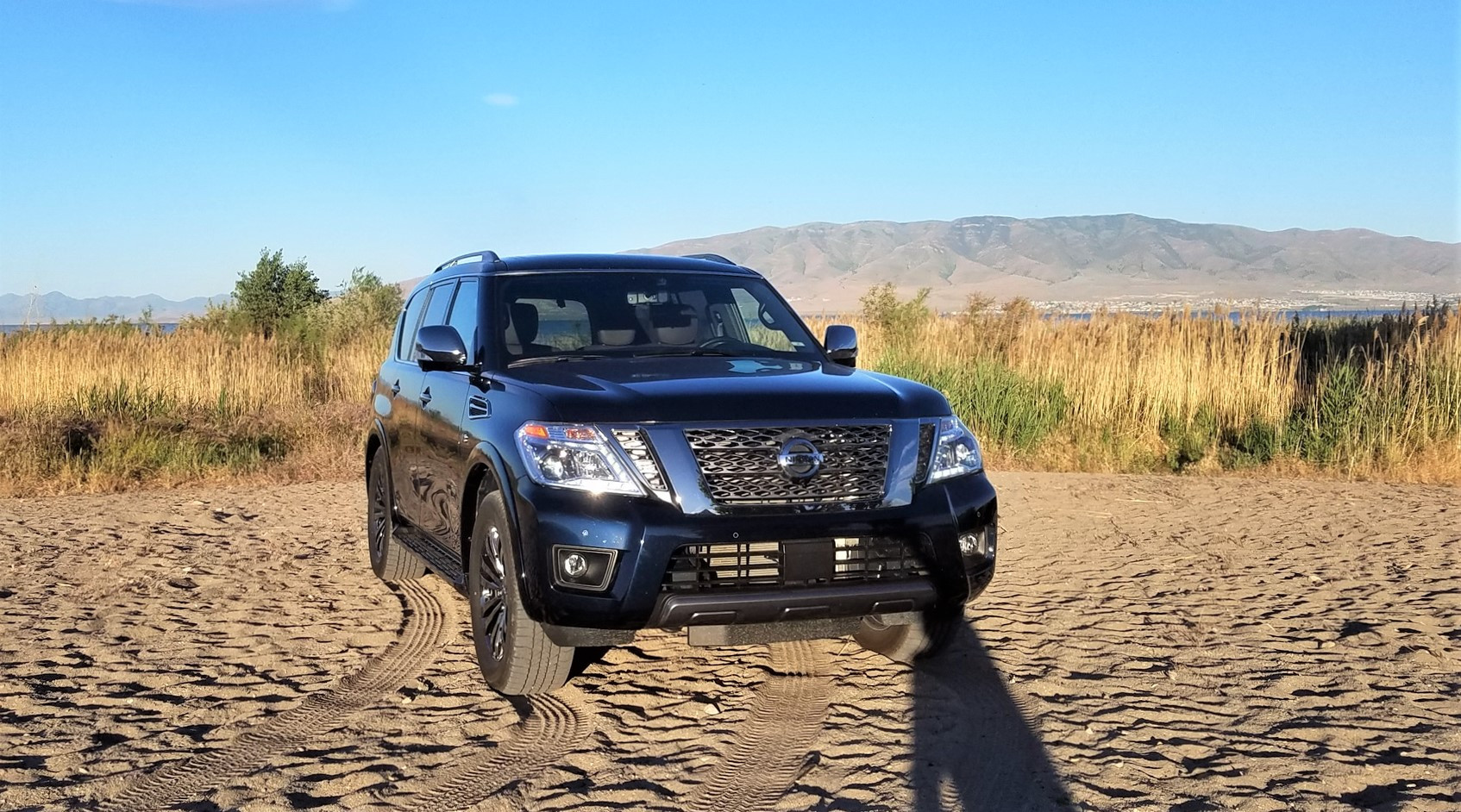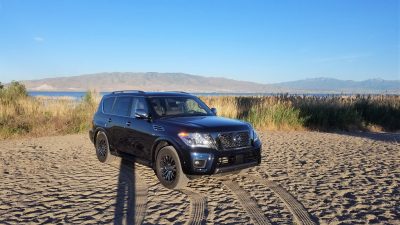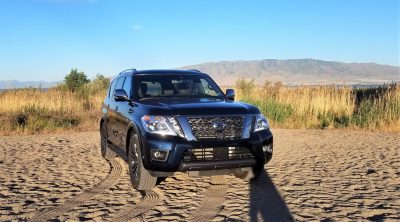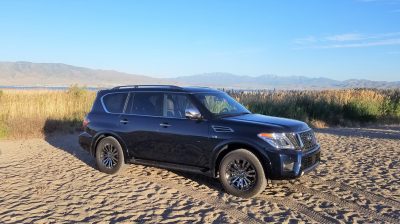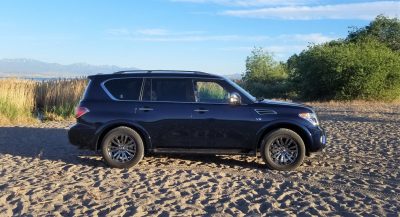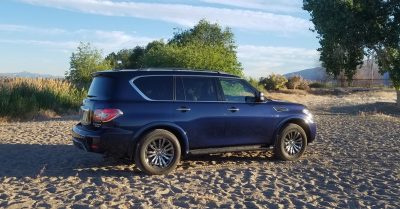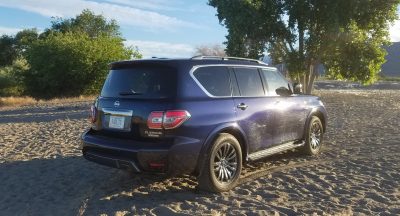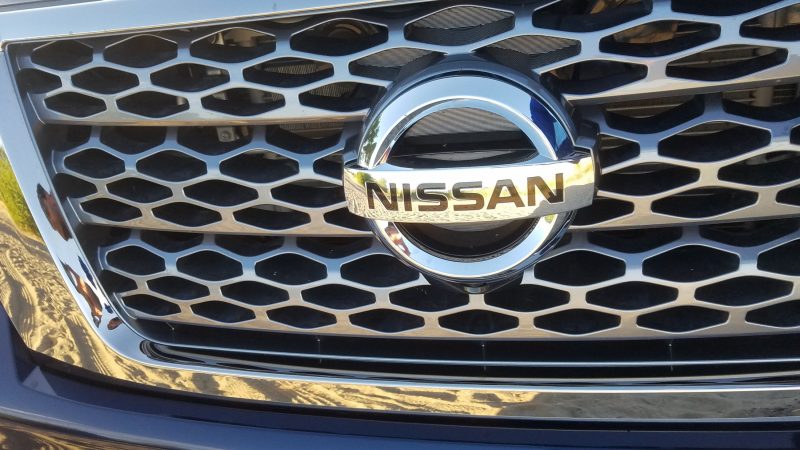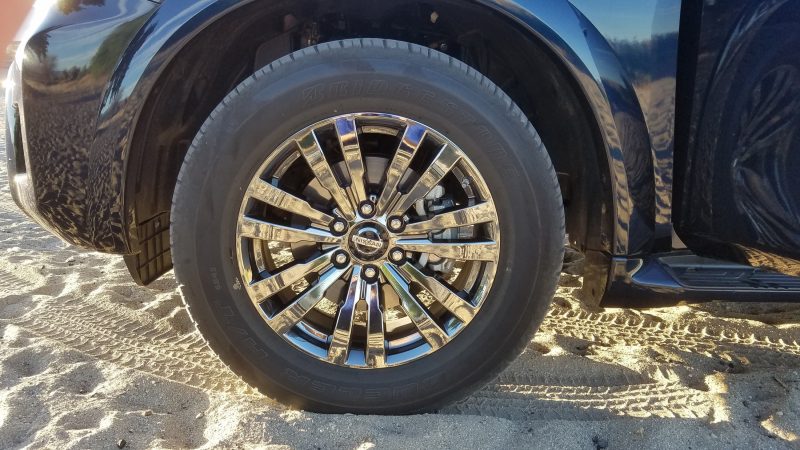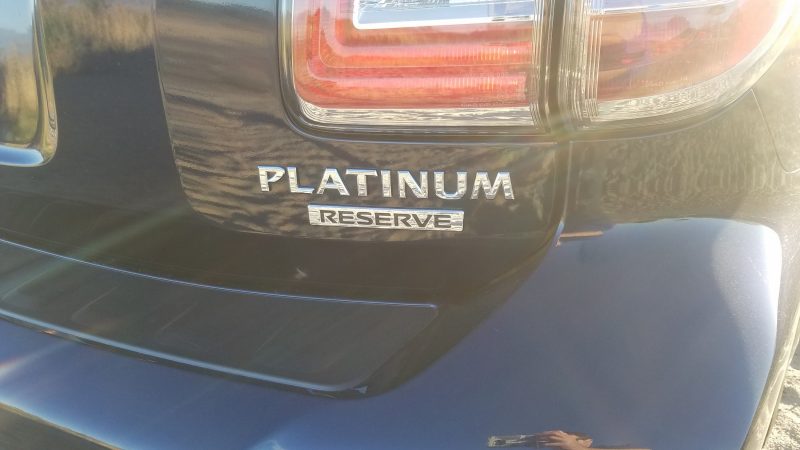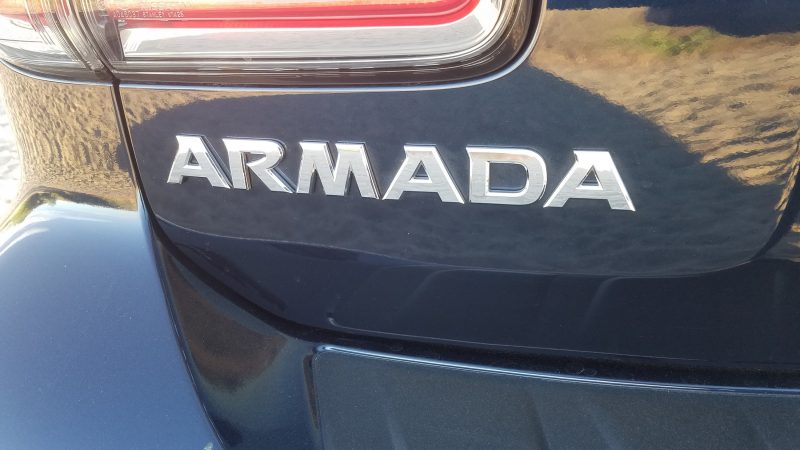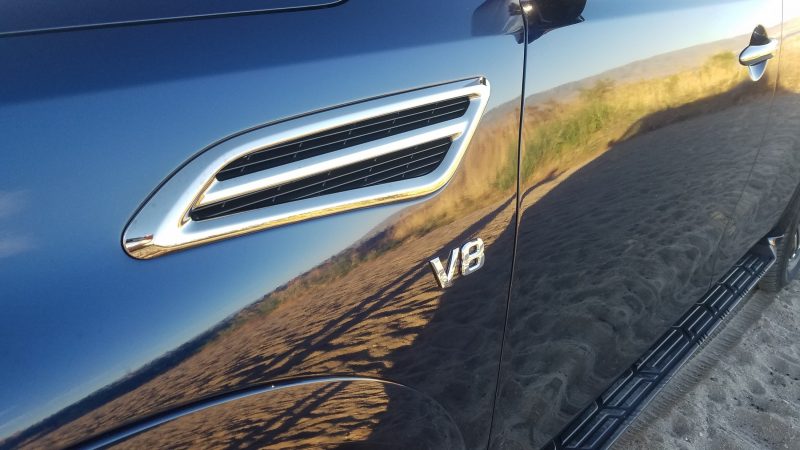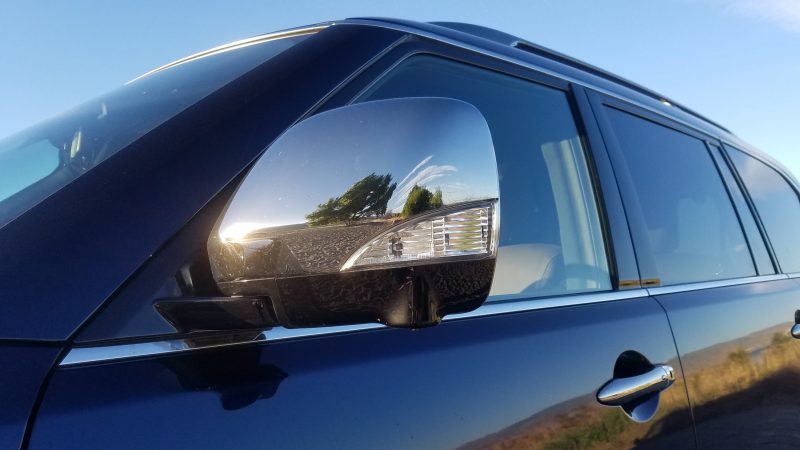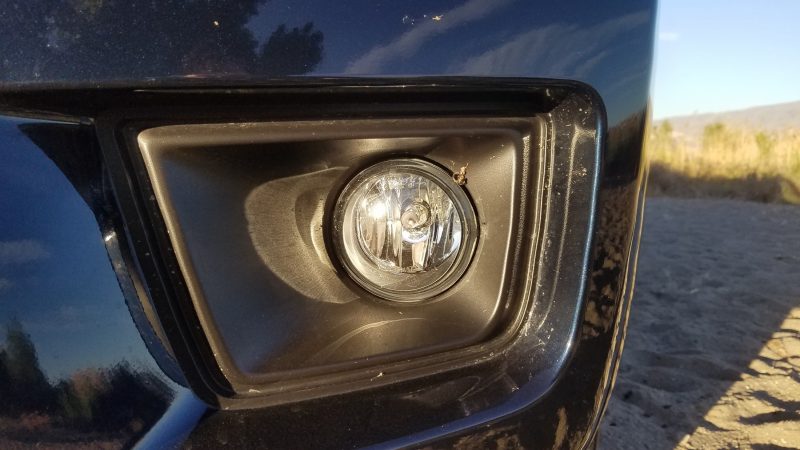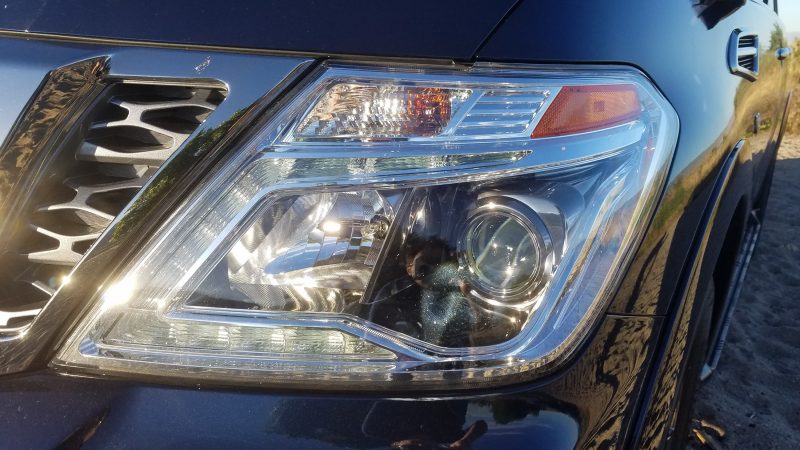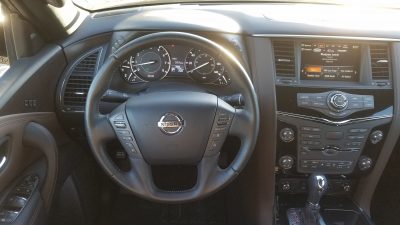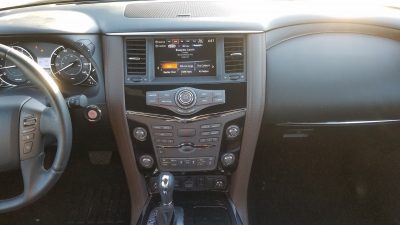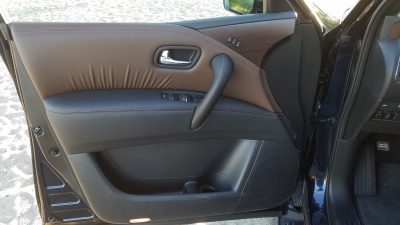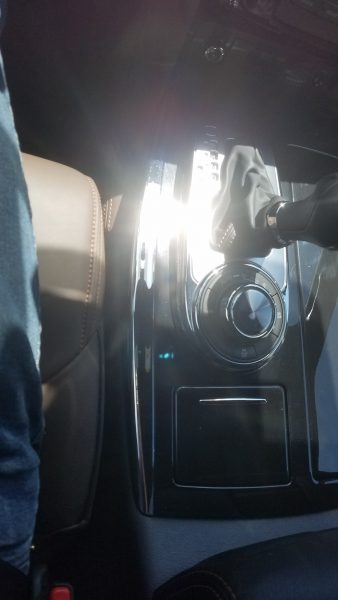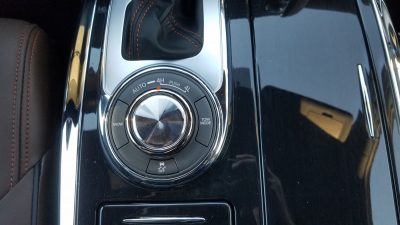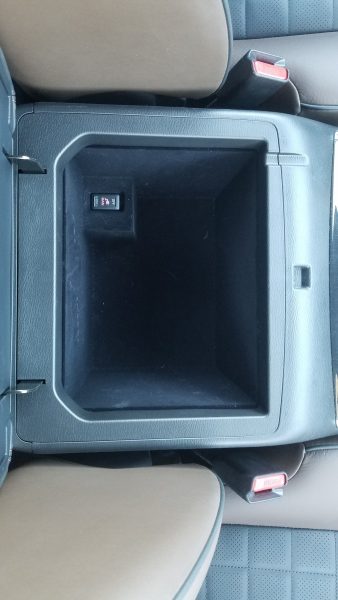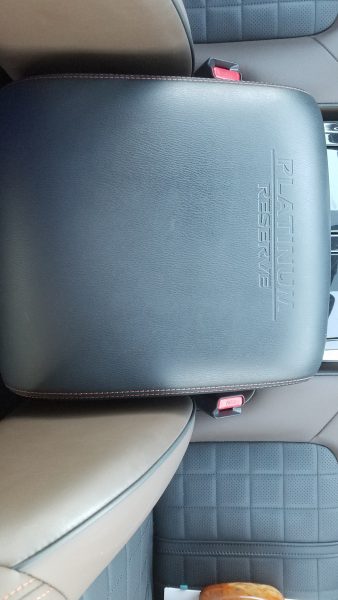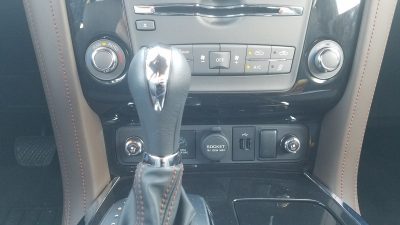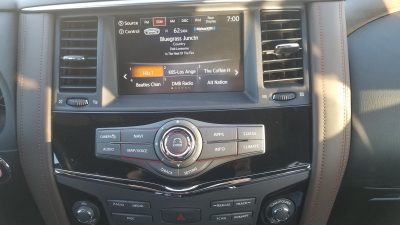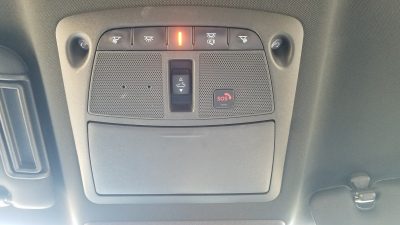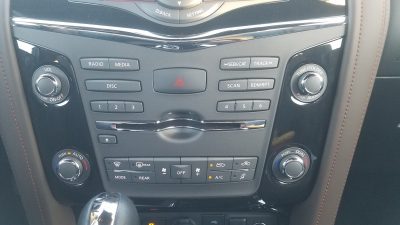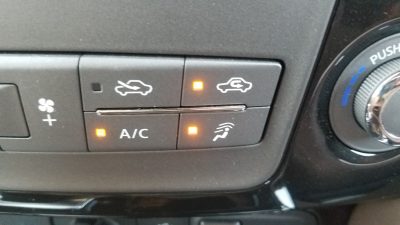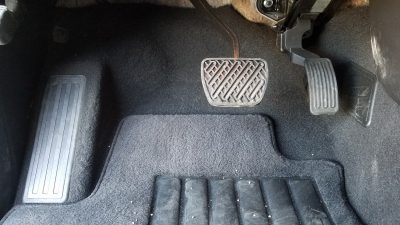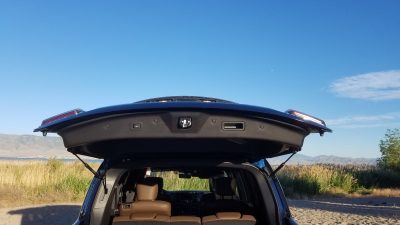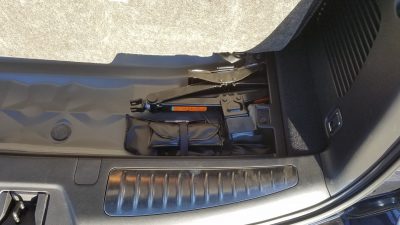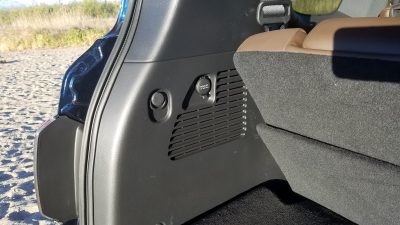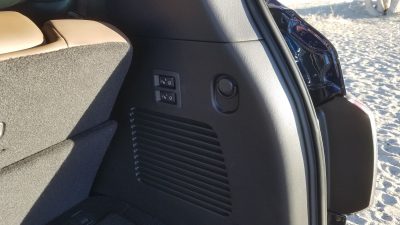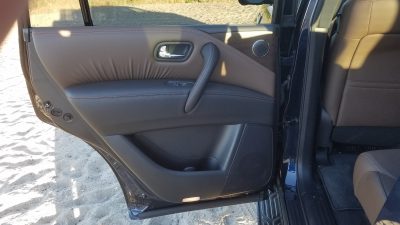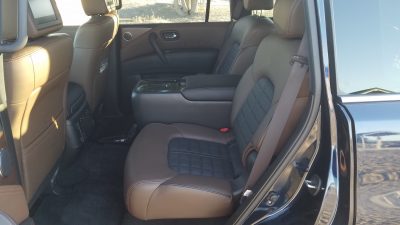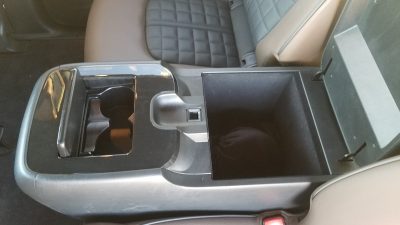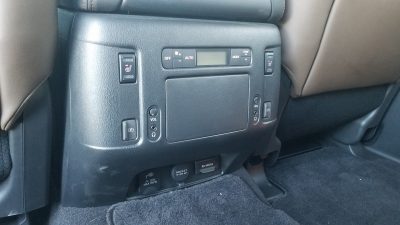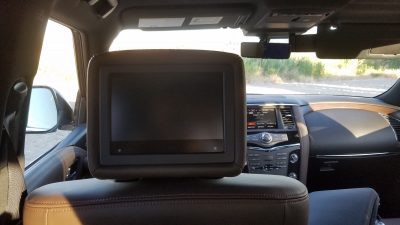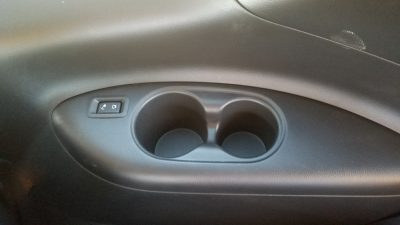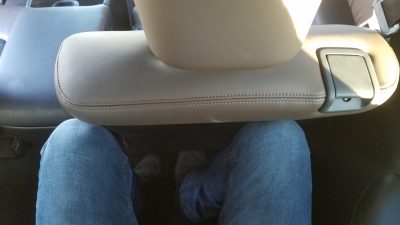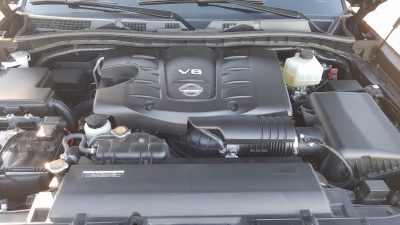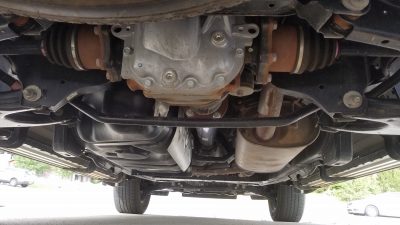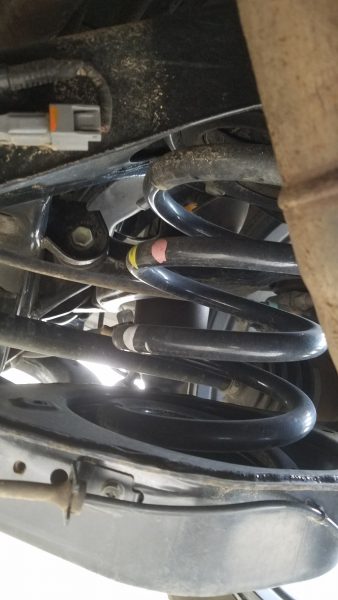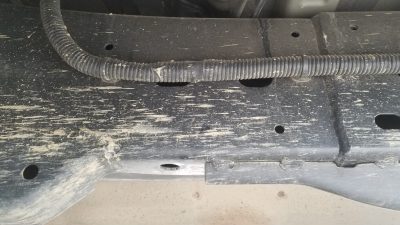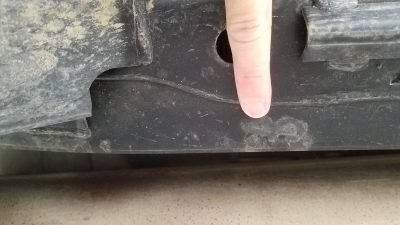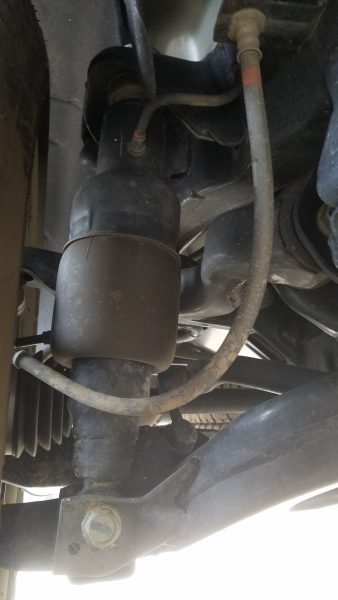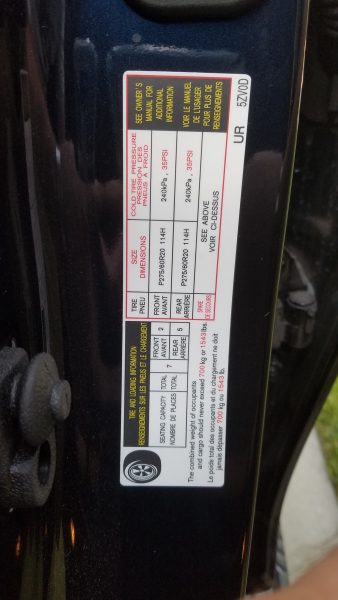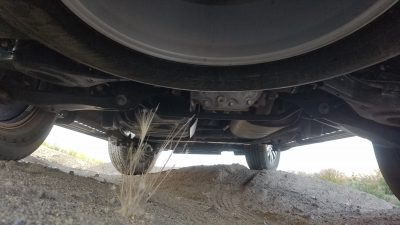For 2019, the Armada only gets additional standard features that were options last year.
Things like rear door alert, intelligent cruise control, automatic emergency braking and forward collision warning are now standard across the Armada lineup.
Outside
Being the largest SUV in Nissan’s lineup, the Armada has presence. It is slightly larger than a Tahoe but smaller than an Expedition, putting it right in the middle of its class. While some other vehicles are starting to look the same as everything else in their class, the Armada has standout looks.
Recently, Nissan has done an excellent job in creating beautiful rims, and the 20-inch 14-spoke dark chrome wheels included in the Platinum Reserve package are no exception to this. The Platinum Reserve Armada only comes in three colors: Pearl White Tricoat, Super Black and Hermosa Blue Pearl.
Our test model was equipped with the Hermosa Blue, which is an appealing deep pearl blue with a hint of purple when reflecting from the right angles. The dark chrome wheels work extremely well with this paint color. The dark chrome theme continues on the grille, door handles, and mirrors to complete the look.
The proportions are right on this vehicle from every angle with one exception: the rear bumper. It looks oversized and out of place like a swollen lip. Unlike many modern vehicles, the grill on the Armada isn’t overly large. The D-pillar is large at the bottom, but thins at the top coming to a point at the top rear creating a moving effect.
Inside
Inside the Armada is cavernous. Cargo volume again falls between the Tahoe and Expedition with 16.5 cubic feet of storage behind the third row and 95.4 cubic feet of storage with the second and third rows folded.
The two-tone leather seats are very comfortable and spacious. They don’t hold the driver and passenger in pace very well when cornering hard, but cornering hard is not what this vehicle does. The front seats are heated and ventilated, and the leather wrapped steer wheel is heated. The wood trim is real and matches beautifully with the charcoal and dark brown leather.
The front center console houses the shift lever that includes manual gear selection for the seven-speed auto. It also has the 4wd selector dial, snow mode button, tow/haul mode button, and the traction control button. This is an excellent place for all of these features to be located, as the driver can find them quickly and easily.
There are also two cup holders and two additional storage compartments in the center console.
For some reason, Nissan decided to put large pieces of extremely reflective metal in the front center console. It does look very nice, but when it reflects the sun into the driver’s eyes, it can be very distracting, to the point of being dangerous.
The center arm rest houses a rather small storage area given the size of the vehicle. Inside the storage area is the button to turn on the inverter for the 120v outlet facing the second row seats at the bottom of the console.
The second row captains’ chars are also very roomy and comfortable. They feel very similar to the front seats. The second-row folds and flips to provide easy access to the third row. The only problem with this feature is that the third row can’t be accessed with car seats in the second row. Storage for the second row is good, with cup holders and a small storage box in the center console. With the Platinum Reserve, the family entertainment system is included with two 8-inch color displays in the front seat headrests. There is an HDMI port in the rear or a DVD player up front for the system.
Climbing into the back row is easy with the second row seats folded and flipped out of the way. Sitting in the third row is tight for adults and would only be comfortable for shorter trips. Be sure to watch the knees of the third row passengers when putting the second row seats back into place.
There is plenty of room for three kids to sit in the third row, even for longer trips. The power folding and reclining seats can be controlled from the third row or from the cargo area. Folding and unfolding the seats takes more time than it should, but this can also be considered a safety feature that keeps people from getting trapped or hit by fast folding seats.
Driving
There is no getting around that the Armanda is a large body on frame SUV. It drinks fuel, has significant body roll in the corners and is very heavy, but it’s tall, providing a commanding view of the road. It is very stable when towing, and quite capable off-road.
The 5.6-liter V8 also used in the Titan puts out 390 horsepower and 394 foot-pounds of torque and sounds amazing while doing it. The power is adequate for this vehicle and helps it to tow up to 8,500 pounds. A lot of fuel is burned to create all that power and move the nearly 6,000-pound Armada. The EPA rates the AWD Armada at 13 mpg city, 18 mpg highway and 15 mpg combined. We averaged 14 mpg in our testing that included towing a 5,000 boat through the mountains.
On the highway, the Armada is smooth and handles potholes without getting upset. This is due to the four-wheel independent suspension. There is plenty of power to get up to speed for merging onto the highway or passing slower vehicles. The rear is also self-leveling with airbags attached to the rear shocks. This firms up the ride nicely for towing or when hauling heavy loads.
During our tow testing, the Armada remained stable and controlled. It never felt underpowered and despite the independent suspension, the trailer never unsettled that SUV. Reversing with a trailer attached caused the emergency braking system to apply the brakes. For some reason, the Armada didn’t detect that there was a trailer attached. The system can be disabled but it must be done each time the vehicle is placed into reverse. The Armada does come prewired for a trailer brake controller, but there is no factory installed brake controller available.
Off pavement the four-wheel independent suspension keeps impacts isolated to individual wheels rather than transferring them side to side like a solid axle would. The Armada easily climbed our articulation and traction test with only two wheels with traction. The aggressive EBD (Electronic Brake force Distribution) quickly applies the brakes to any wheels without traction, sending power to the wheels with traction. A true low range transfer case is available with 4wd auto, 4wd hi and 4wd low settings. In other markets, the Nissan Patrol and Infiniti QX80 are available with a locking rear differential and drive modes for different terrains, but we don’t get that here in America. The Tahoe and Expedition both offer locking rear differentials.
The Armada, like all Nissans we’ve tested, doesn’t pass the fog light test. To use the fog lights the headlights must turned on, thus negating the function of a fog light.
Pricing
The 4wd Platinum models starts at $62,690 and adding in the Platinum Reserve package is an additional $3,000. The only other option our test model had was the carpeted floor mats for $315. When the destination charges are included, this brings the total price to $67,850. If you need the space but not the luxury, the base model 2wd SV starts at $47,100.
For comparison, the base LS Tahoe starts at $47,790 and the top of the line Premier starts at $62,490. The Expedition has a starting price of $52,130 for the base XLT and $73,365 for the high-end Platinum.
So What?
The Armada is a great family-hauler for those that need the space and towing capacity. It is good off-pavement and has the potential to be great if Nissan included features already in place in other countries. Some people call it old school or a dinosaur, but the body on frame design has many benefits for a vehicle this size.
When shopping for vehicles in this class, make sure to take a close look at the Armada.
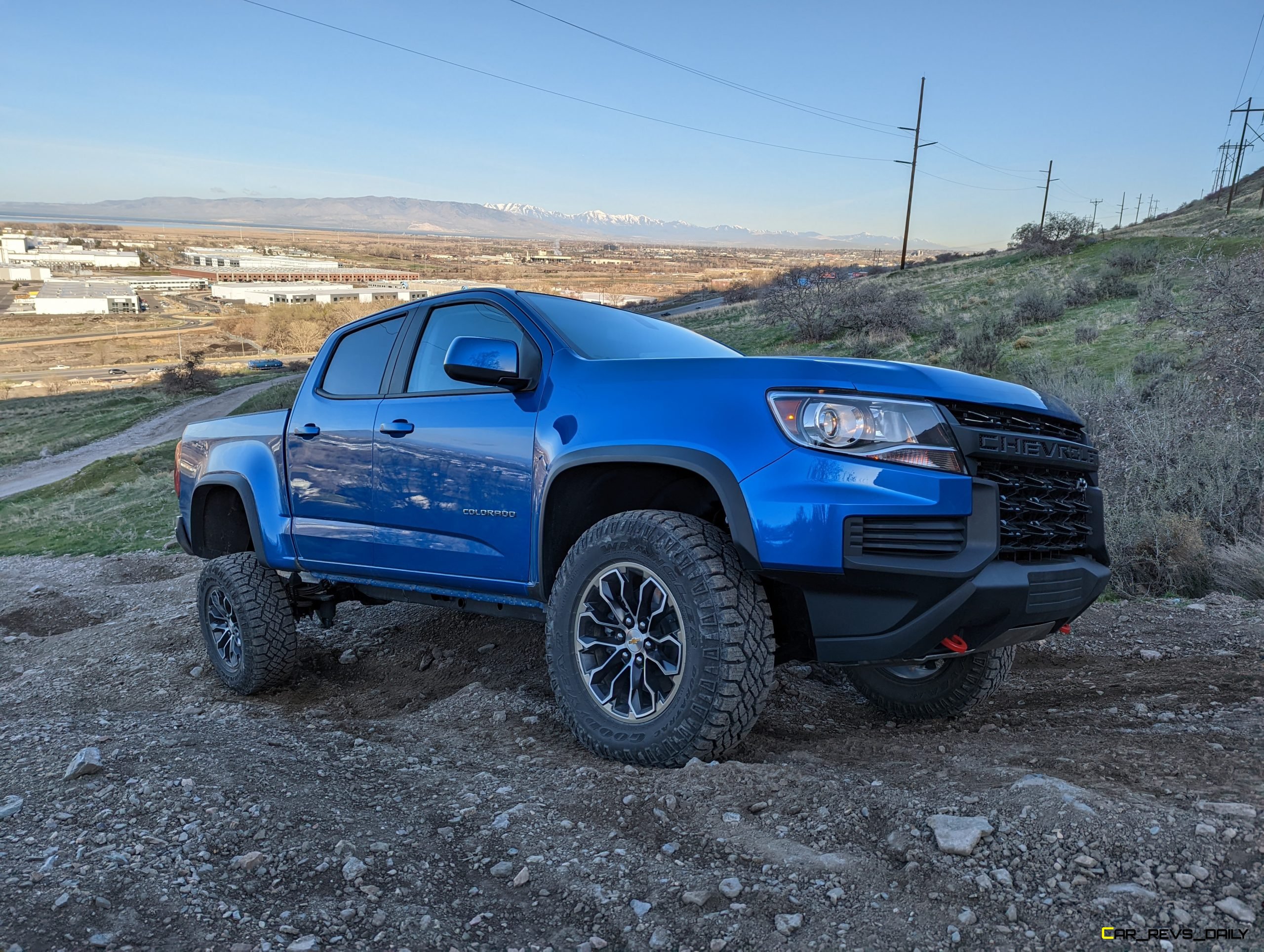
Matthew Barnes is an experienced towing expert. He works as a mechanical engineer and his day job involves testing a variety of vehicles while towing trailers of all types and sizes. Matt shares his knowledge by writing for automotive news outlets in the evenings. When he’s not working he can be found spending time in the great outdoors with his family. He enjoys camping, hiking, canyoneering, and backpacking. Whenever possible he spends time riding in or on any power sports vehicle he can find and claims he can drive anything with a motor, which probably isn’t true.
Matt lives in the Utah mountains and often posts cool off-roading videos to his Instagram and YouTube channel.

